How and how to properly clean the glass-ceramic hob from dirt
Cleaning up any contamination begins with a visual assessment of the situation. You look and see: what kind of dirty stain, what is it on. All materials and the stove also have their own cleaning characteristics. The last thing you want to damage is especially delicate materials by removing dirt on it.
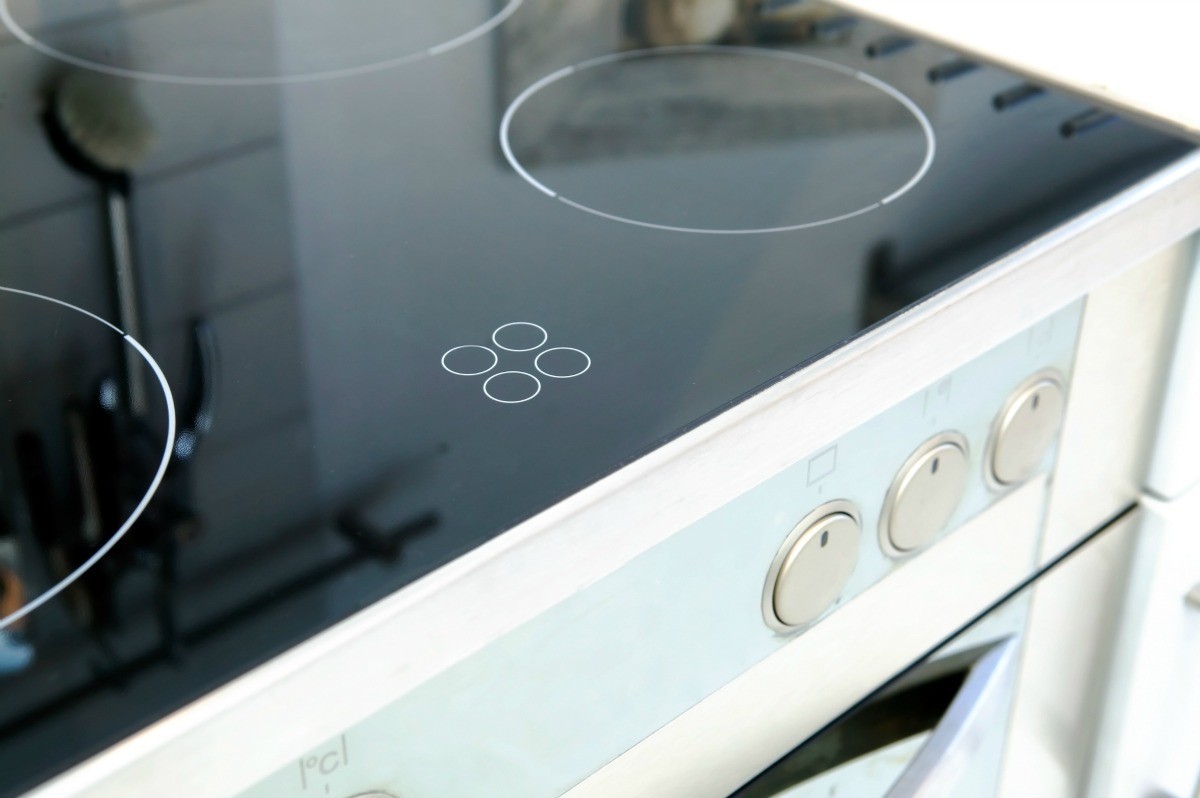
Basic rules for the care of glass-ceramic kitchen stoves
Each household appliance has its own lifespan. And it depends not only on the manufacturer, but also on who uses it. After all, correct and careful maintenance prolongs the correct operation and aesthetic appearance.

With the correct use of glass ceramics, it can serve faithfully for 10-15 years.
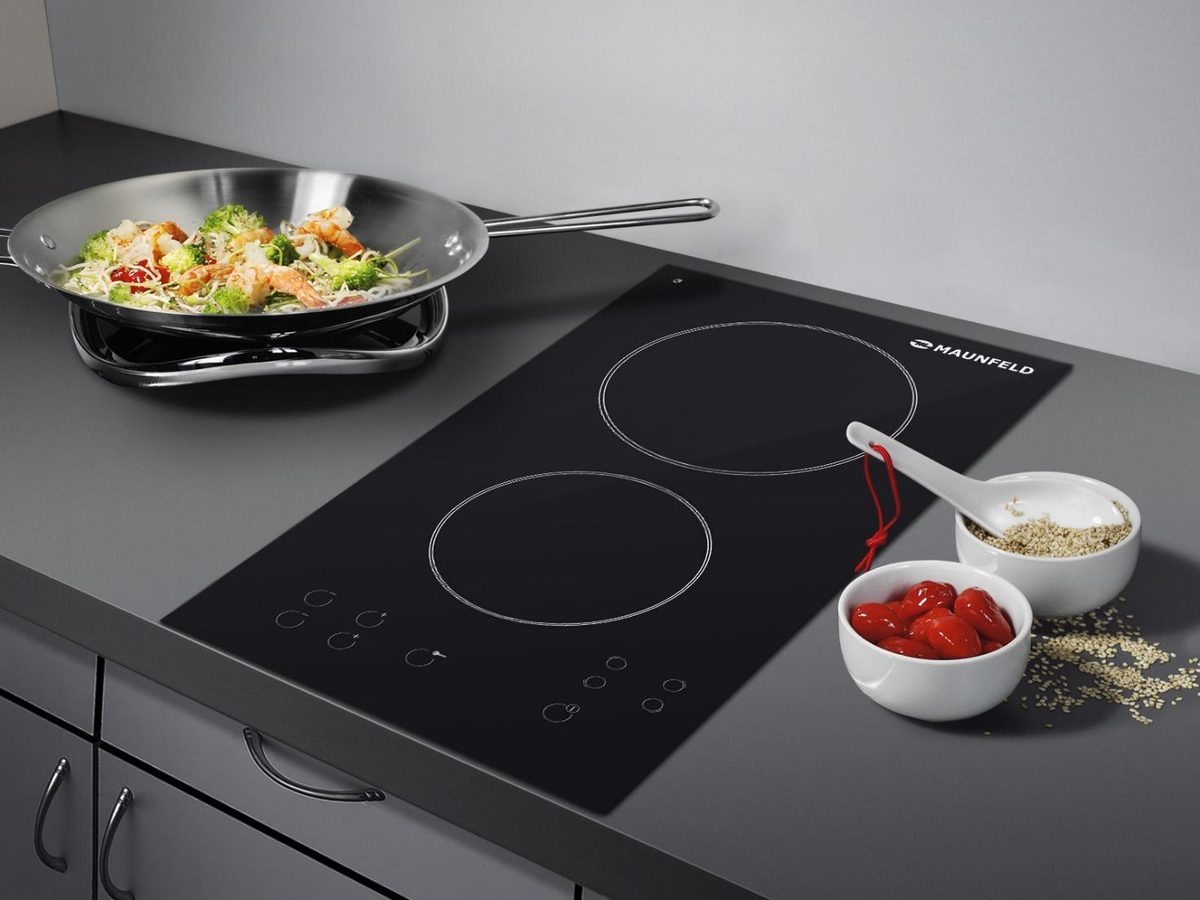
Otherwise, you can damage the panel in a matter of hours after purchase. Pay attention to what and how you wash the surface. Glass ceramics is "afraid" of sudden temperature changes. Before placing the pot with water droplets on the hob, let it drain over the sink. Water is one of the panel's worst enemies.
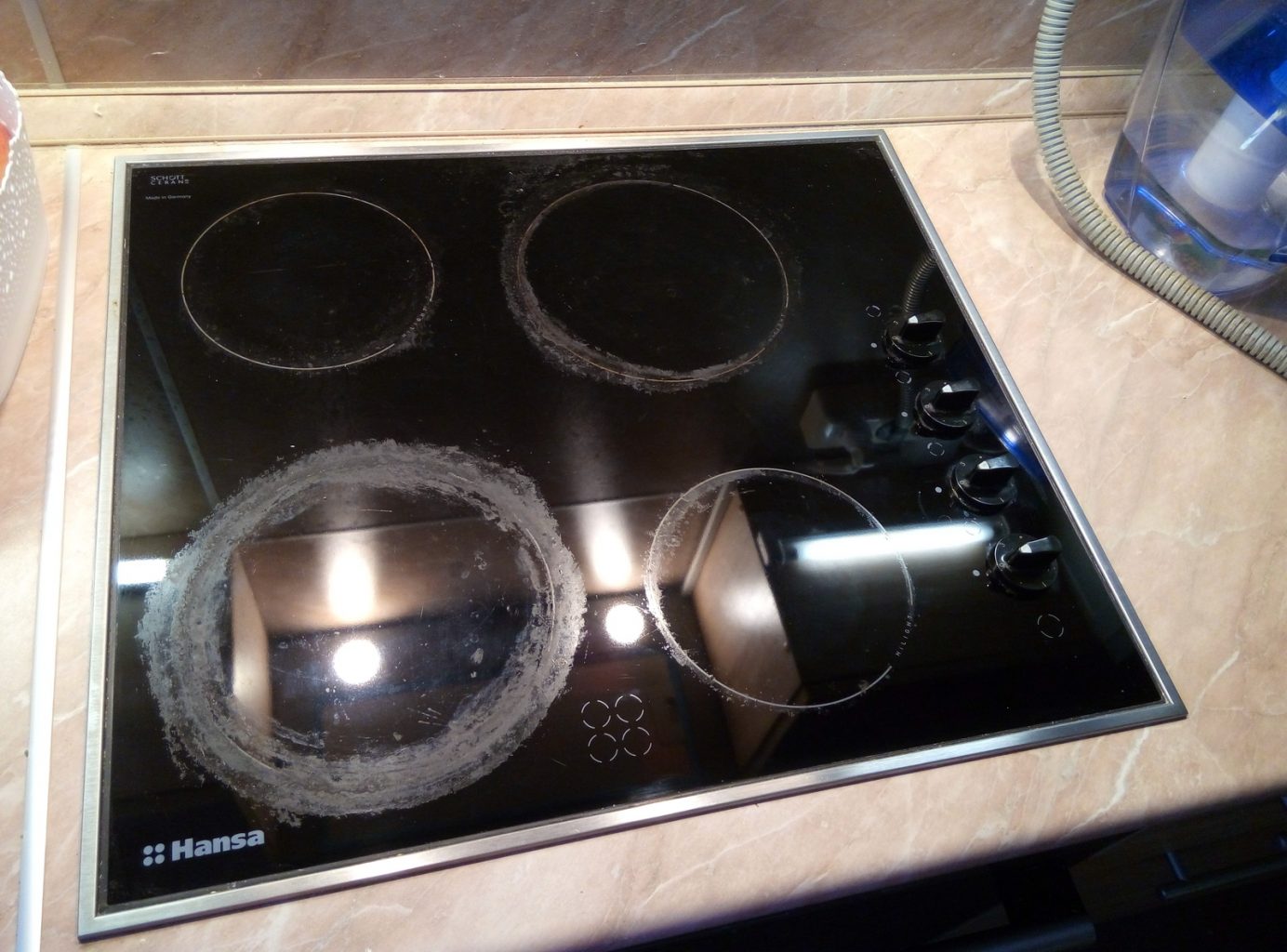
Consider all the features of use. What can be applied, what is not.
The best care and cleaning products
Given the ceramic features, it’s easy to guess that the first step is to learn how to clean ceramic tiles. These should be soft and gentle gels. In the store, you can pick up special liquids marked "for glass ceramics", or you can take universal ones.

Among the choices, a non-abrasive cleaner for glass ceramic hobs are well-established by the following manufacturers:
- Seth;
- Domax;
- Luxus "Shine of Steel";
- Glaskeramik Reiniger;
- Kochfeld Pflegereiniger.
Of non-special means, you can use: gels for washing dishes, sprays for washing windows and for stainless steel. Window sprays will perfectly shine any glass material. The main condition is that the selected chemistry does not have abrasive particles.

Since abrasive materials cannot be used in the store, it is worth purchasing a set of soft sponges and rags. Microfiber or flannel rags will do the job of wiping gently. The same list includes wiping the surface, at the end of washing work, with paper or napkins.

What is prohibited to use
To maintain the integrity and cleanliness of the surface, do not use abrasive substances and tools for cleaning. Metal, plastic and hard sponges leave scratches on the surface. Which in themselves look ugly, and even can accumulate pollution and be a place of accumulation of bacteria.

Eliminate abrasive powders from your detergent arsenal. They will leave scratches.
The glass-ceramic enemy is sugar, salt and other small ingredients. Sugar and molasses are the biggest threats.
How to clean a glass ceramic stove using folk methods
Among folk remedies, there are a lot of ingredients than to quickly wash an electric stove. This applies to work on the stove. Often, folk remedies come to the rescue when there is no way to buy a remedy, and there is always something at hand.

Soda
The contradiction to the above-written words is soda. The only abrasive that can be used to clean ceramics. Not in its pure form, of course. You will need to cook a gruel from water and soda in warm water. After cooking, apply it on the glass and wait a few minutes. As a result, wipe everything dry.

If the result was not good enough, next time, you can drop a couple of drops of lemon juice or vinegar on top of the gruel so that the soda reacts with it and has a better effect.
Vinegar
A prominent representative of disinfectants is vinegar. Mix vinegar with water, pour into a spray bottle. And spray over the area to clean. After a couple of minutes of waiting, rinse off with plain water.

Lemon acid
The acid works identically to vinegar. Can be cleaned with either citric acid or a lemon wedge. In the second case, you can simply wipe the tile with a slice or drip juice on it. The powder will have to be dissolved in water and after application, give time to take effect. This usually takes about 20 minutes.

As a result, the cooking area is also wiped dry. The method is endowed with a bonus in the form of a pleasant aroma from lemon.
Laundry soap
Long lasting but safe method. For preparation, dissolve in hot water: 20 grams of baking soda with 2 tablespoons of vinegar and 25 grams of laundry soap. The resulting mixture should remain on the surface for several hours. Finally, rinse it off with warm water.

Other effective ways
The popular list of recipes is supplemented with: ammonia, saline, mustard powder, a mixture of soda and vinegar, a solution with glue, soda and powder. They are not used as an ingredient on their own. They are also tedious to dissolve in warm water, or mix with another component to have an effect. This type of recipe includes working with glue.

The recipe is as follows: soda ash in the amount of 3 tablespoons, half a glass of washing powder, 1 tablespoon of silicate glue. All components are poured with a glass of water, the resulting mass is applied in a thin layer and wait about 20 minutes. As a result, the adhering dirt is washed off together with the product.
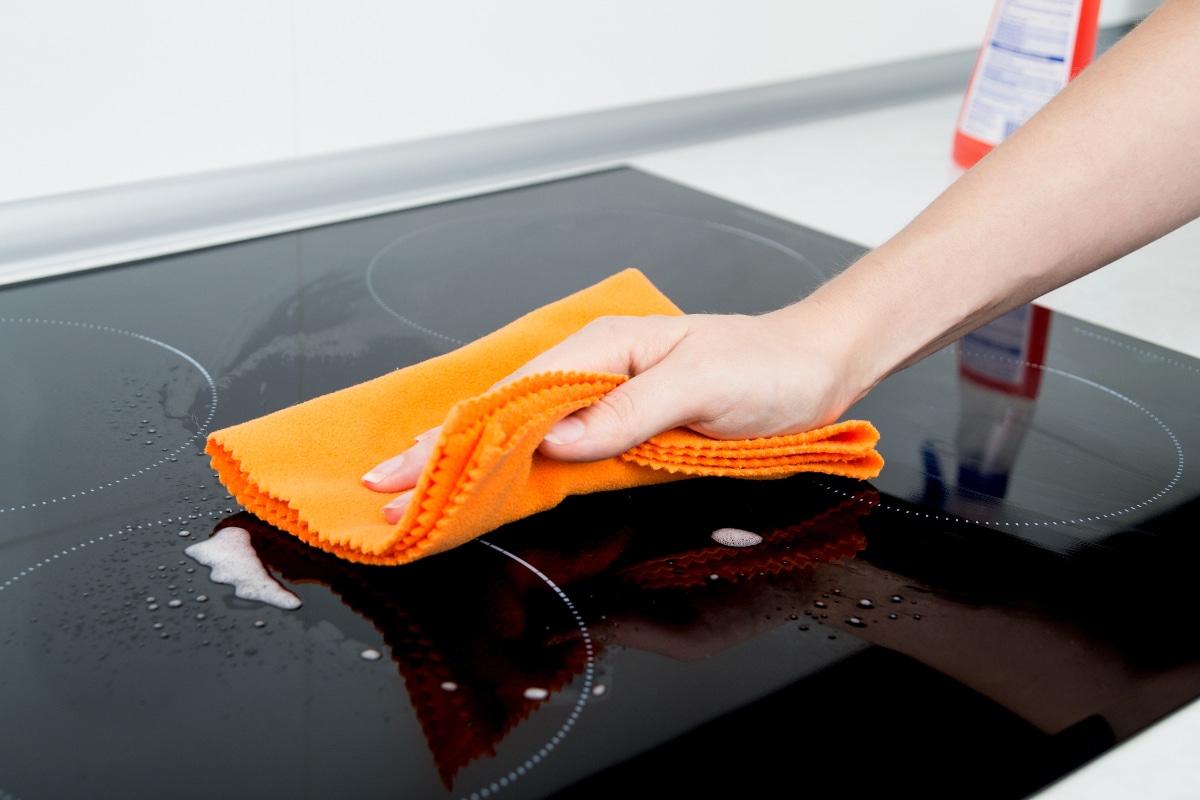
However, what the people will not come up with if they do not have the necessary means or object at hand.
Speaking of objects, people have applied their skills here as well. Since it is impossible to clean by rubbing with hard sponges, people suggest using a razor. And so that it glides and does not scratch, create a protective film of vegetable oil.

Most importantly, no matter which of the methods and options you choose, be careful. With the careful use of all materials and ingredients, a high-quality cleaning of the coating is created. After each wash, wipe everything dry with a napkin or cloth. And wipe with a product that will add shine.

Light pollution cleaning rules
The easiest way to remove dirt is when it first appears.This does not require special products or solutions. You will need a damp paper or cloth to wipe off the trail. In case of contact with the hotplate, wait for it to cool.
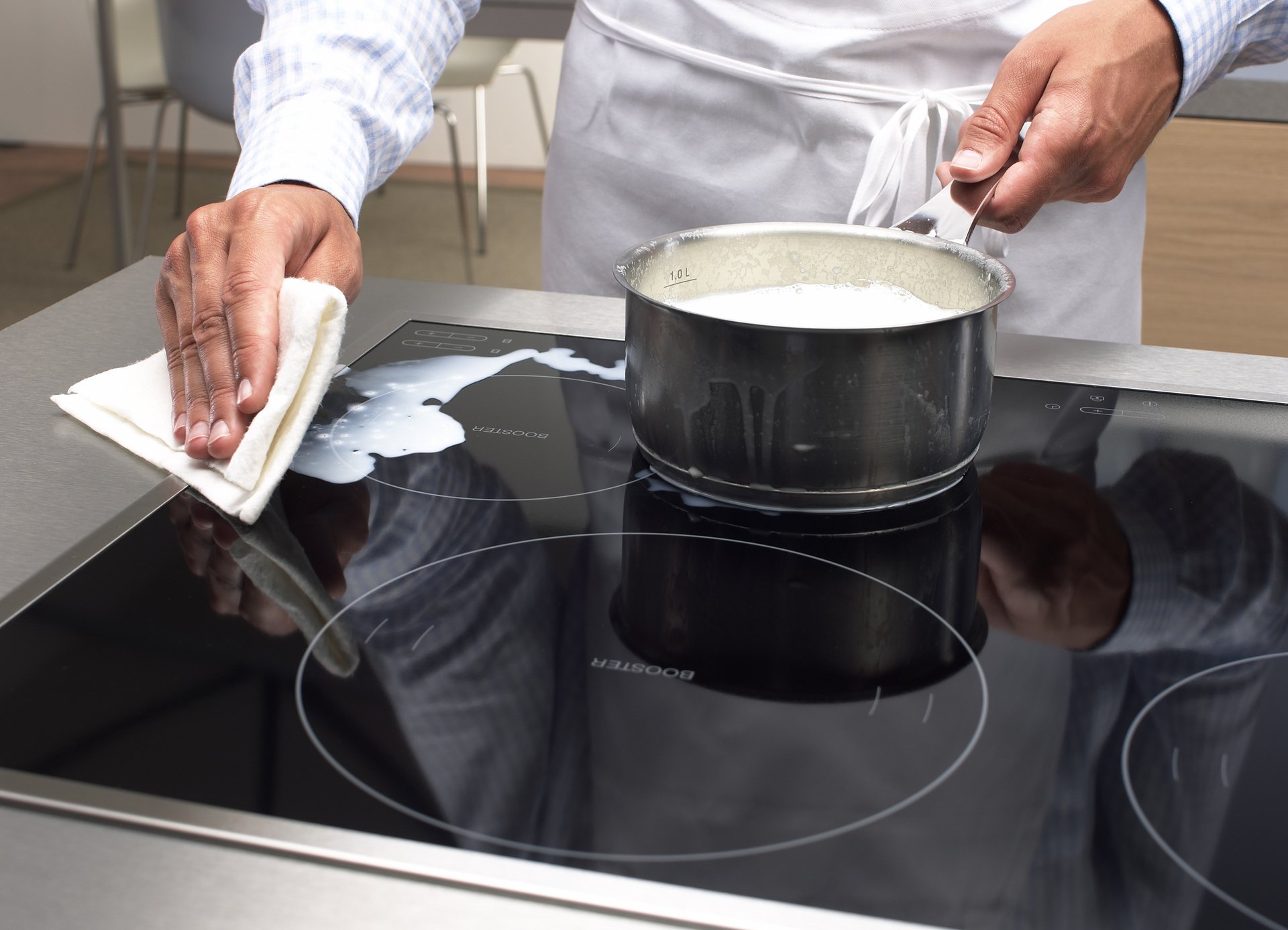
Whitish fat, lime and food residues (escaped milk), it is better to remove on the switched off stove, but not completely cooled down. Use a special scraper.

After applying any product, he needs to be given time for it to take effect. It depends on the strength of the pollution. The minimum waiting period is from 10 to 20 minutes, and the maximum can be half an hour.
The most important rule: loose ingredients (sugar, cereals) should be removed as soon as possible, before they start to burn. Since a point effect on ceramics is harmful to it. Even if the surface is hot, this matter should not be postponed.
Features of removing old dirt
Any old carbon deposits cause difficulty. Never leave dirt removal for later. If this happens, follow the steps below:
- Apply detergent gel or solution.
- Allow time for the product to absorb and take effect.
- Rinse off the liquid.
- Inspect the surface, if there is any dirt, go over it with a scraper. But this will already be easier to do, since they softened under the influence of the solution.
- Rinse the stove and dry with dry cloths.

A well-groomed hob is "pride and pleasantness" - any housewife will say. Treat it with care, and it will answer you with a long service life.
Video: how to clean a glass ceramic hob










